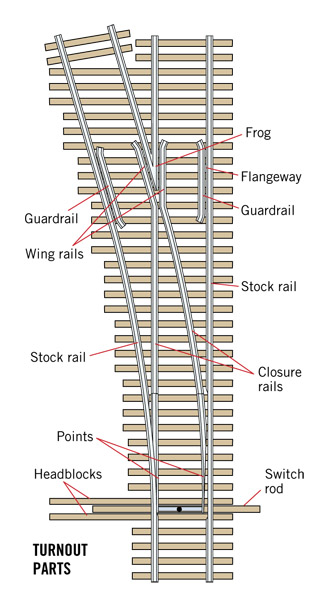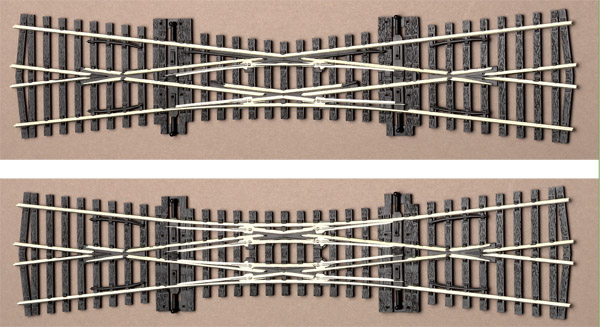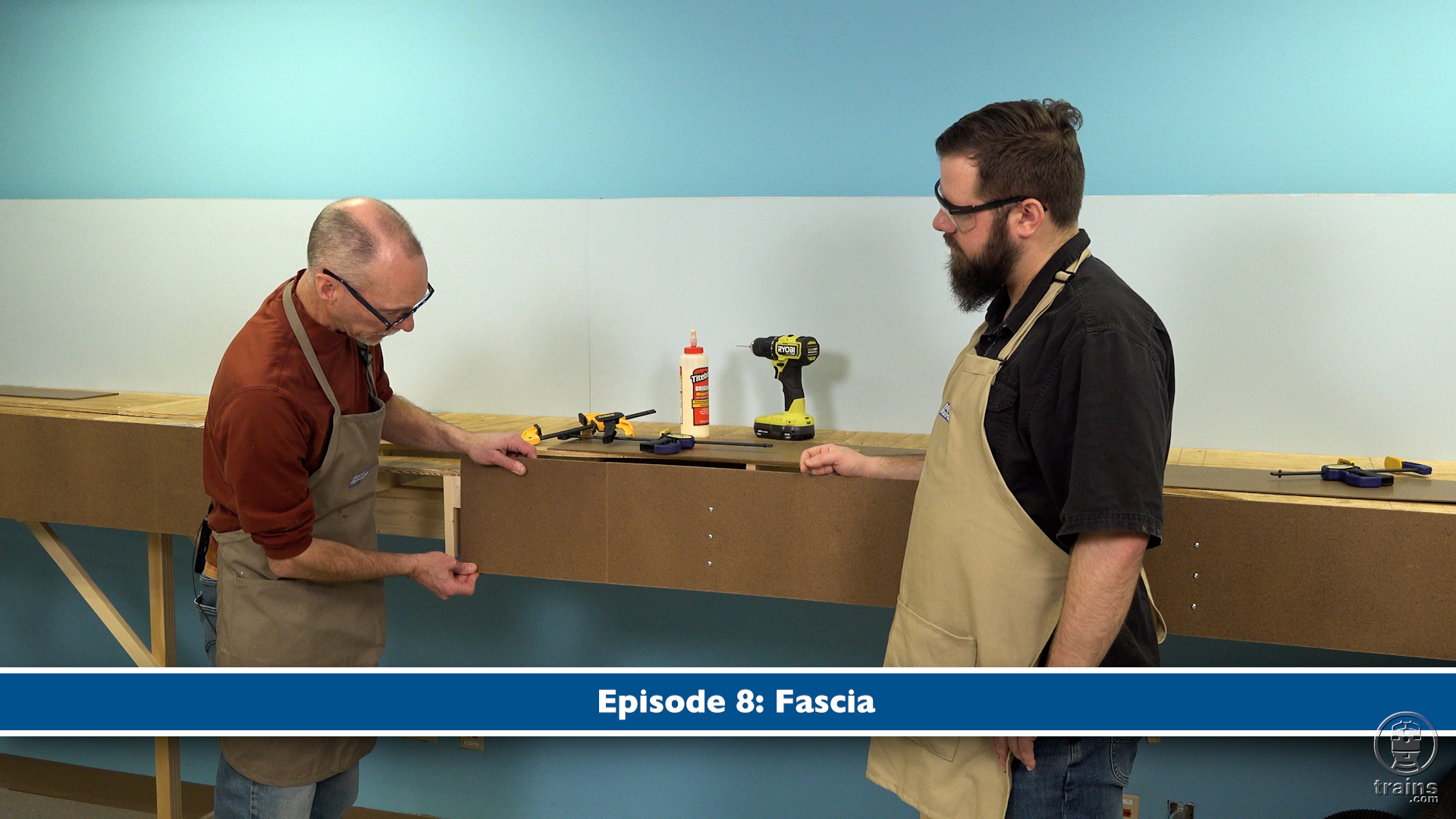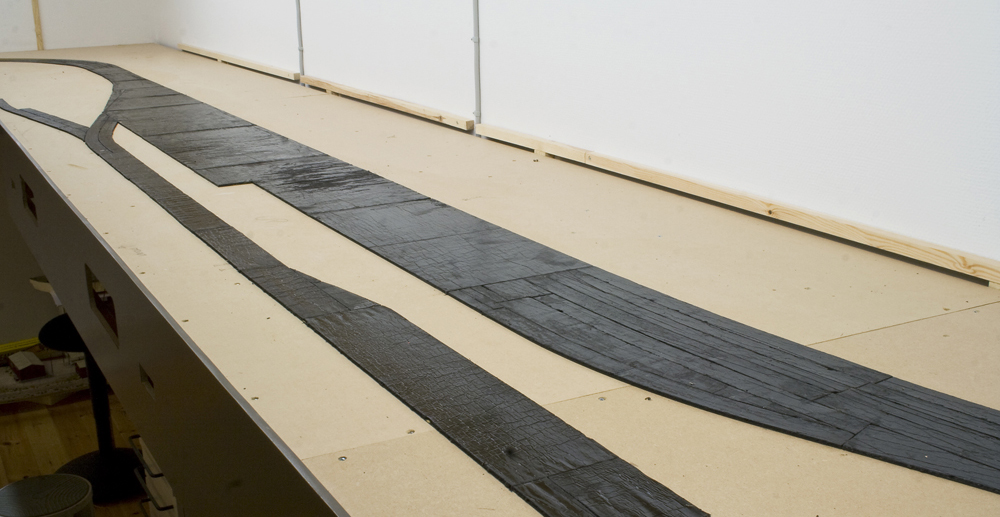Prototype railroads use rail of varying heights and weights depending on the type and frequency of trains that run on it. On model railroads, code is the height of the rail measured in hundredths of an inch. See fig. 2.
Flextrack
While some modelers handlay their tracks by spiking the rail to individual wood ties, most use the preassembled track known as flextrack. Flextrack has its rails attached to movable plastic ties and comes in bendable three-foot or one-meter lengths for HO scale.
A section of track with movable parts that allows a train to switch to another track is called a turnout. A turnout’s number identifies the frog angle – the larger the number, the gentler the angle of the diverging route. See fig. 3.
Model Railroader’s executive editor Andy Sperandeo once explained that the name “turnout” is an engineering term. It’s used by modelers to describe the complete track assembly. It also serves to avoid confusion with electrical switches, also used in model railroading. Technically, a track “switch” is only the moving parts of a turnout.
A slip switch is a specialized turnout and is usually found in places where space is limited, such as in terminals. A double-slip allows the two routes to switch in both directions, while the single-slip allows the routes to switch in one direction only. See fig. 4.
Superelevation
Railroads bank their mainline curves in the same way racetracks do, so that the rail on the outside of a curve is higher than the rail on the inside. This feature is called “superelevation.”
















